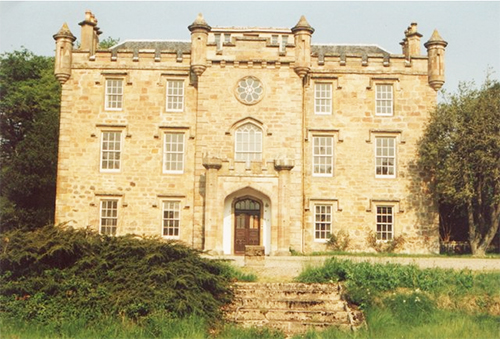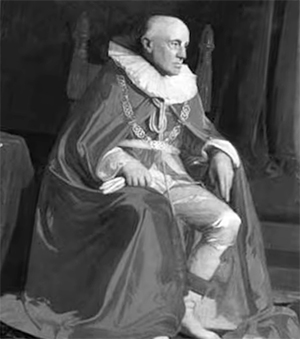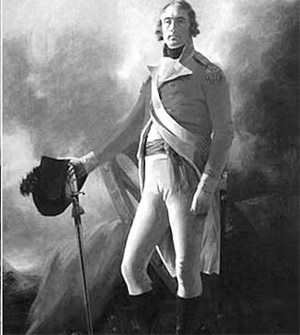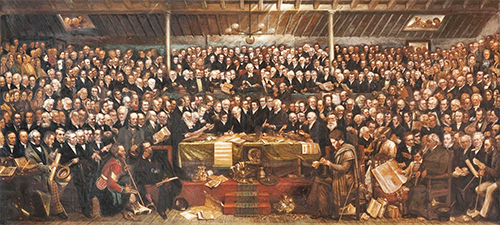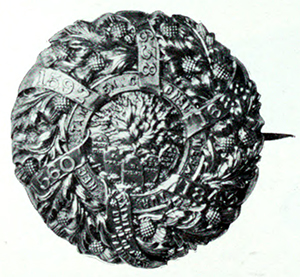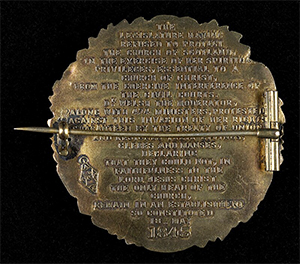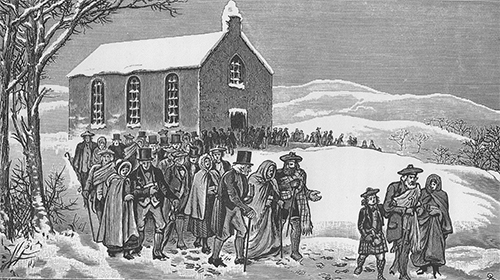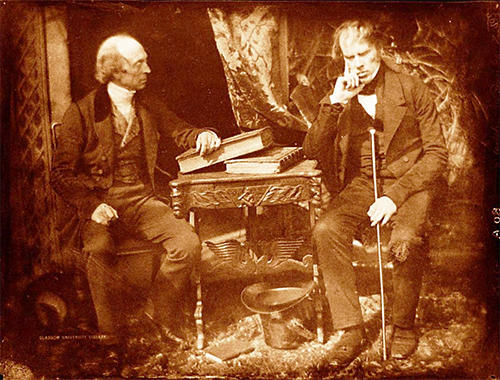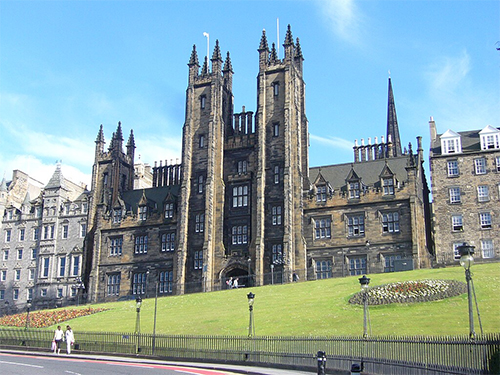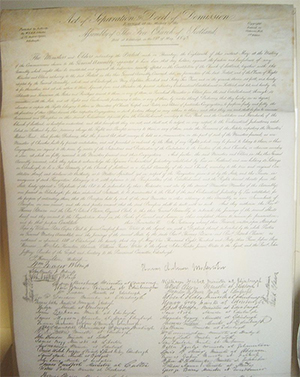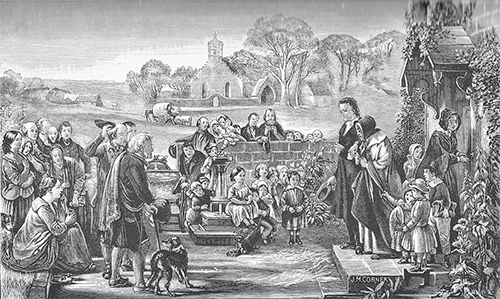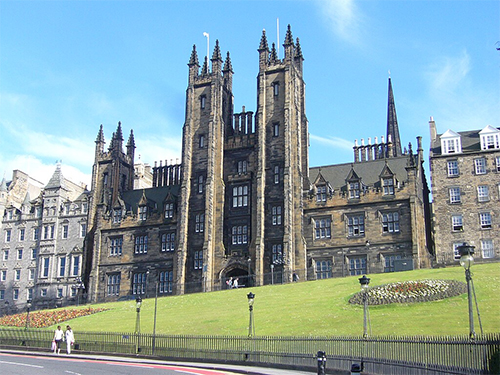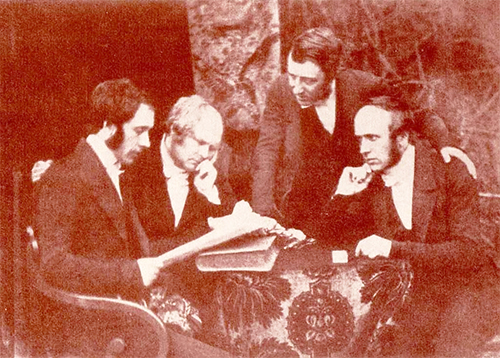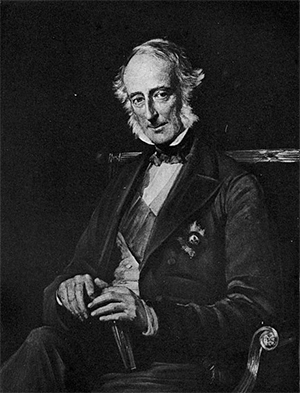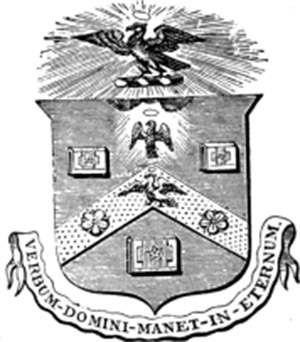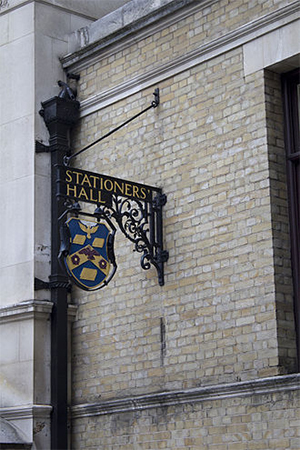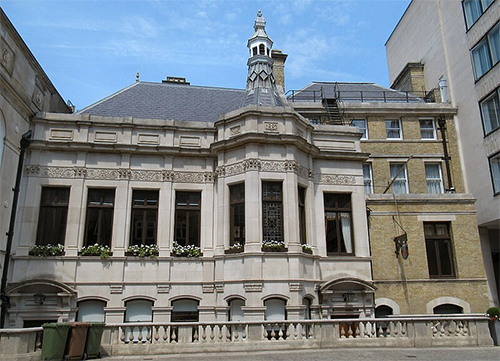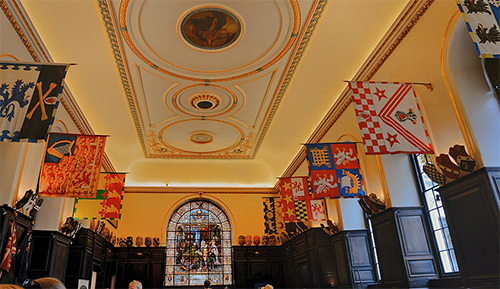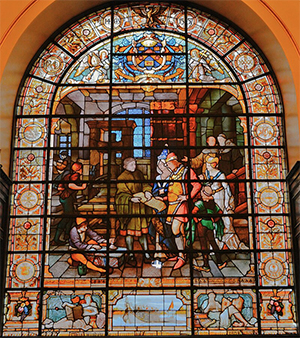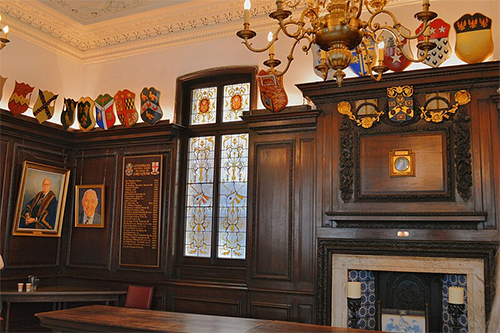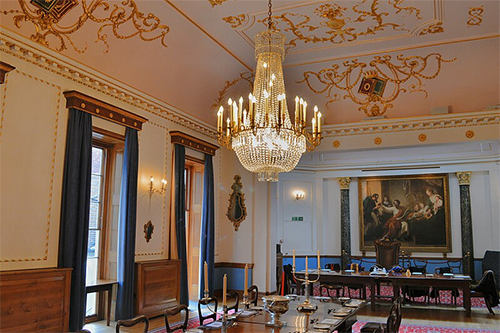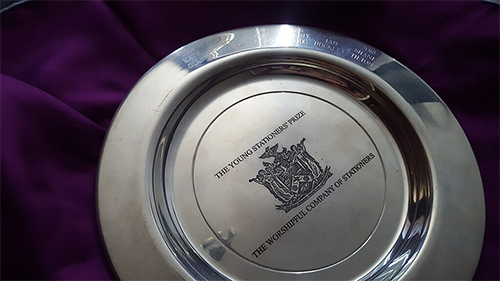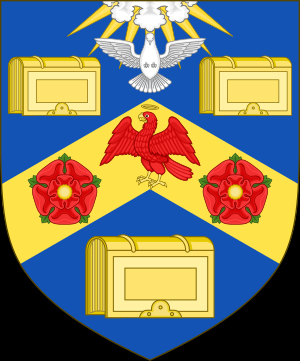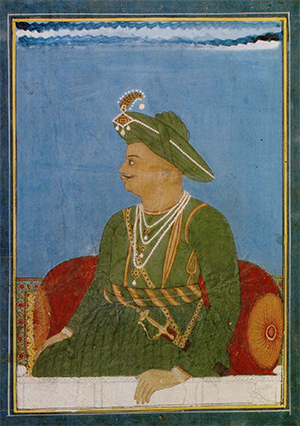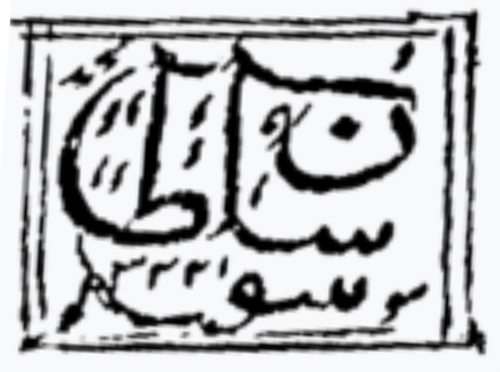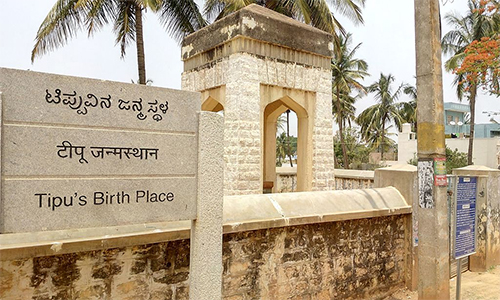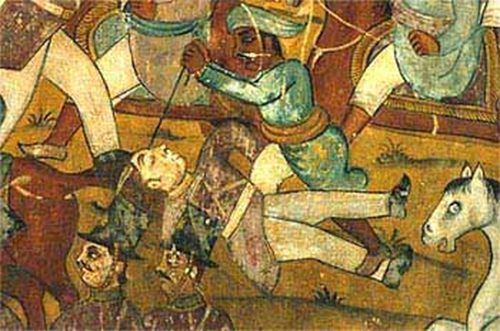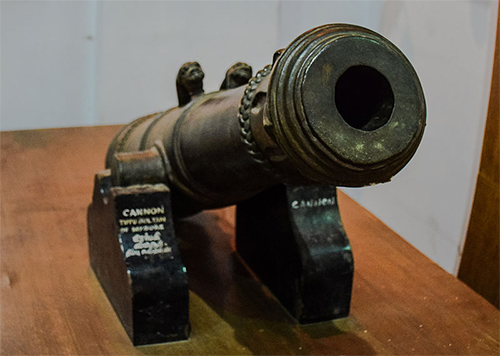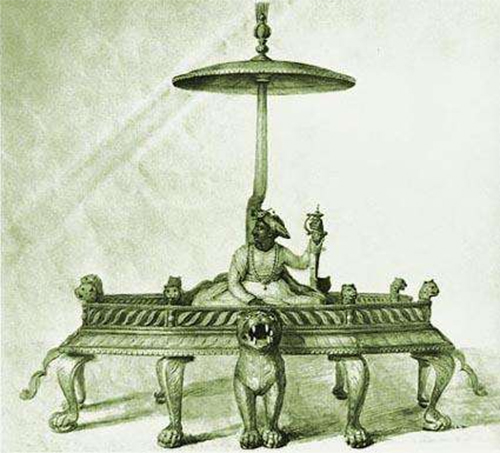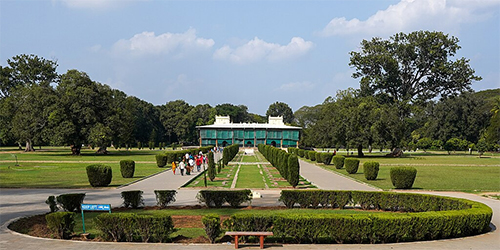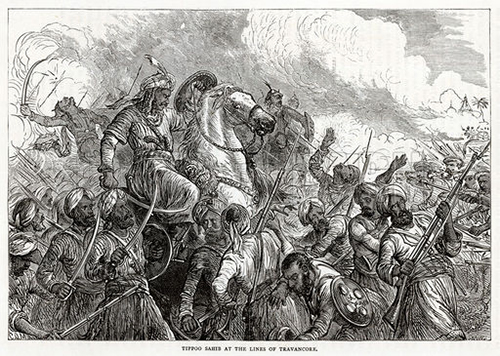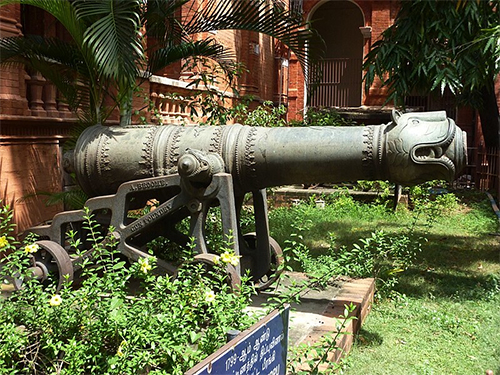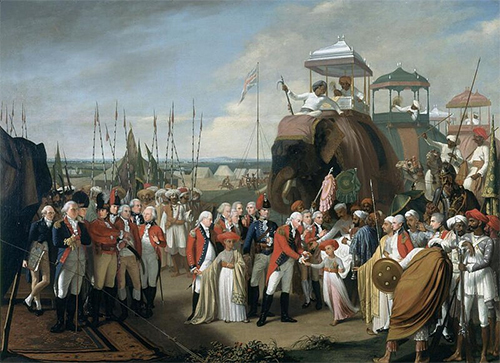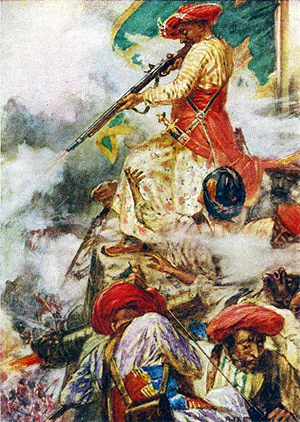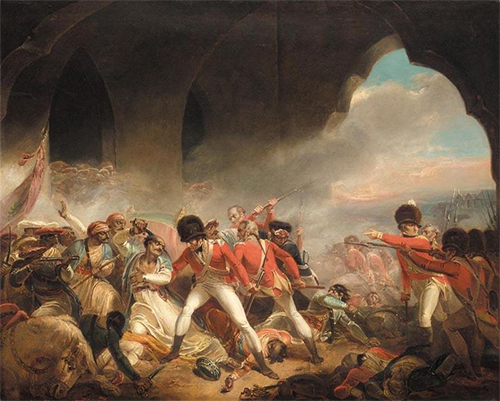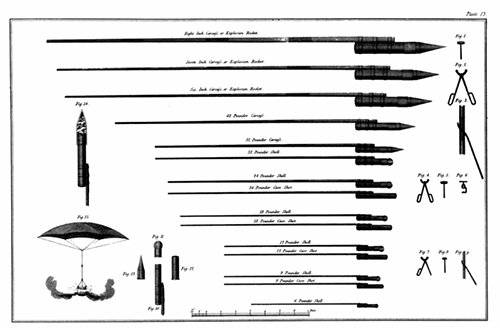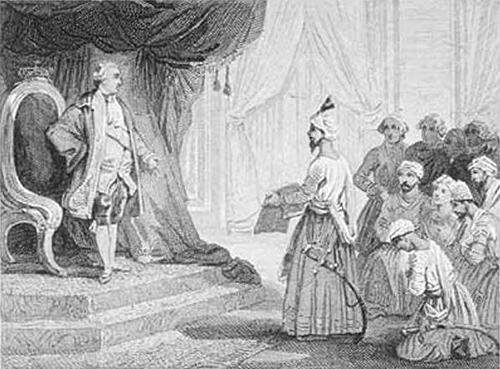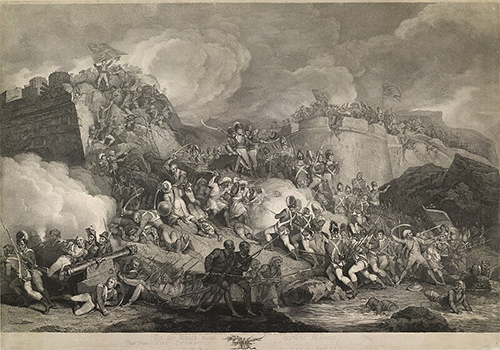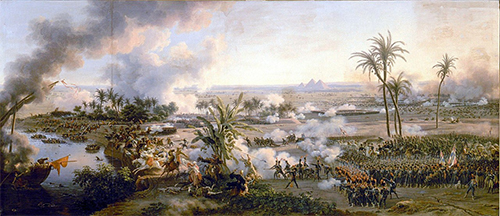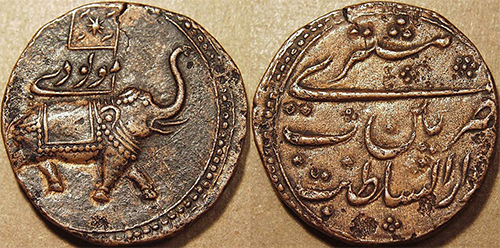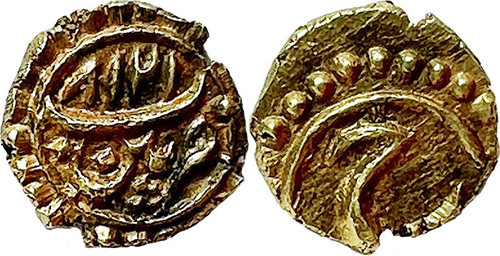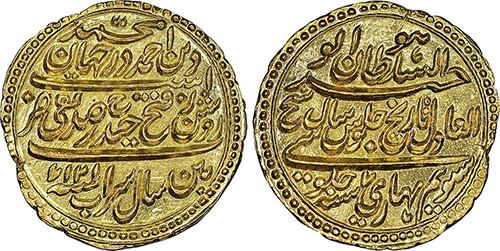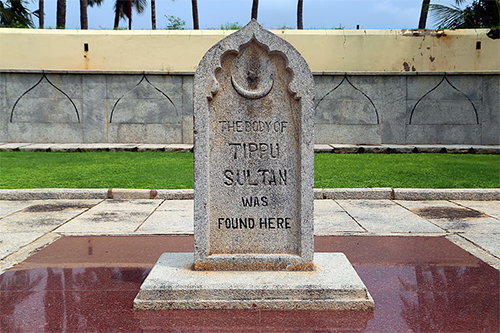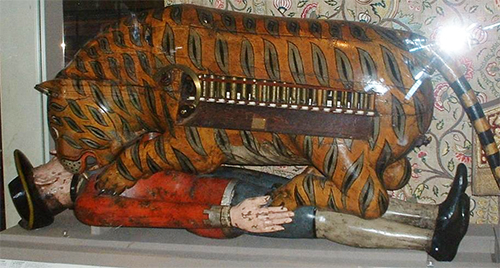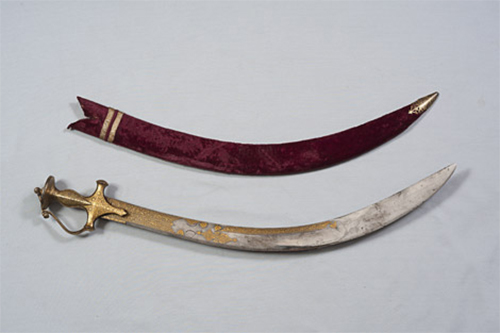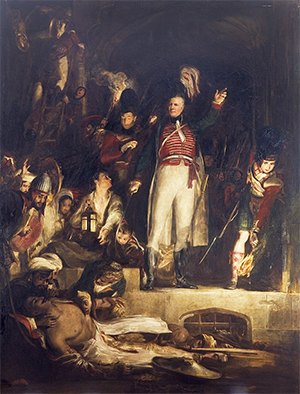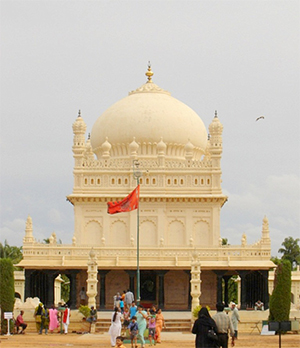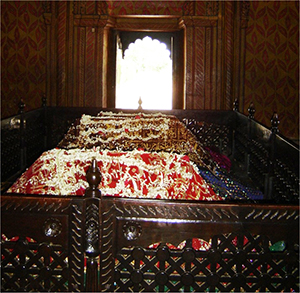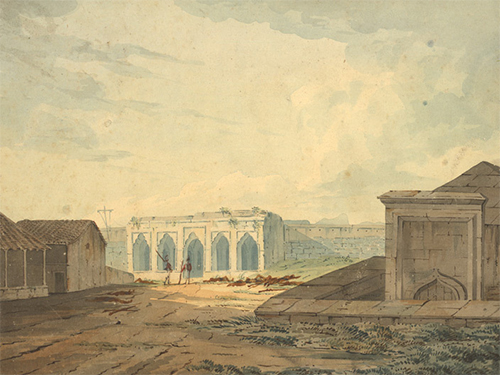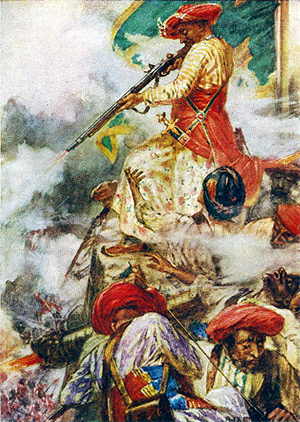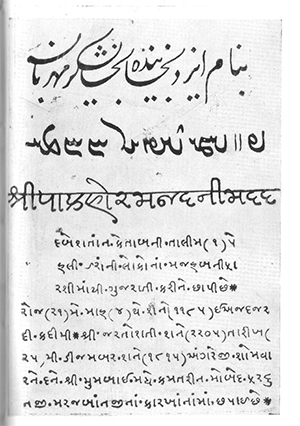by Wikipedia
Accessed: 8/26/24
Major-General John Munro, 9th of Teaninich
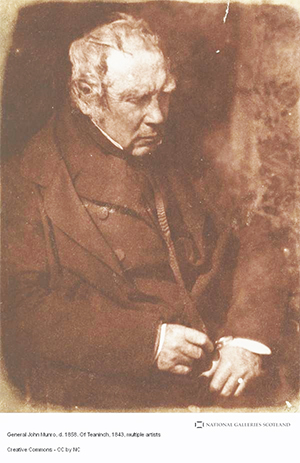
Calotype portrait of John Munro by David Octavius Hill and Robert Adamson, 1843.
Born: February 1775, Glasgow, Scotland, Kingdom of Great Britain
Died: 25 January 1858 (aged 82)
Buried: Saint George CSI Church, Pallikkunnu
Rank: Adjutant; Private Secretary to the Commander in Chief; Quartermaster-General of the Madras army 1807; Lieutenant Colonel 1818; Colonel 1829; Major General 1837; Resident of the English East India Company; Diwan of Travancore
Spouse(s): Charlotte Blacker
General John Munro (June 1778 – 25 January 1858) of the H.E.I.C.S was a Scottish soldier and administrator who served as Resident and Diwan [Diwan: a powerful government official, minister, or ruler.] of the States of Travancore and Cochin between 1810 and 1819.[1]
Early life
John Munro, fourth son of Captain James Munro, 7th of Teaninich (Royal Navy), was baptised in Alness on 11 February 1775.[2] The Munros of Teaninich were a cadet branch of the Scottish Highland Clan Munro and their family home was at Teaninich Castle in Ross-shire.[1]
Teaninich Castle, front
Military career
John Munro enlisted as a cadet in the East India Company's Madras Army in April 1791, aged 16,[2] and was appointed Lieutenant in August 1794.[3] He took part in the Battle of Seringapatam in 1799, and was shortly afterwards promoted to Captain[3] and appointed Adjutant of his regiment, in which office he displayed a thorough acquaintance with military duties.[1] John Munro was an accomplished linguist, being able to speak and write in French, German, Italian, Arabic, Persian and several Indian language.[1]
Munro held various appointments on the Staff, and was private secretary and interpreter to successive Commanders in Chief in India.[1][4] He was personally acquainted and in regular correspondence with Colonel Arthur Wellesley, later Duke of Wellington, during the Mahratta War.[1] He also served alongside his distinguished namesake Sir Thomas Munro, 1st Baronet (of Lindertis). John Munro assisted in quelling the Vellore Mutiny and was soon afterwards appointed Quartermaster-General of the Madras army, directly from the rank of captain, at the early age of 27 years.[1]
As Quartermaster-General, Munro was asked in 1807 by the then commander-in-chief Sir John Craddock to compile a confidential report on the Tent Contract, an allowance to Madras Army officers to be paid equally in peace and war and regarded by them as part of their emoluments. Munro's report pointed out that the contract gave officers "strong inducements to neglect their most important duties".[5] Craddock agreed with Munro's recommendation that it be discontinued and replaced by enhanced batta. The implementation of these changes added to the discontent simmering amongst officers of the Madras Army, already resentful at being less well rewarded than those of the Bengal Army. Moreover, the report was leaked; fellow officers who read it inferred that their honour had been impugned, and charged Munro with conduct unbecoming an officer and a gentleman.[6] The episode occurred during a period of dispute between the Madras civil government and the new commander-in-chief, Lieut-General Hay Macdowall, who, no longer ex-officio a member of the governing council, had given notice of his resignation. On 20 January 1809, some months after the appeal from his officers, and despite his impending departure, Macdowall had Munro arrested, leaving the supposed court martial to be heard by his successor. A week later, on the eve of departure Macdowall was reluctantly compelled to release Munro from arrest on the orders of the Governor Sir George Barlow. Together with his Adjutant-General, Col. Francis Capper (who was probably responsible for leaking Munro's report), Macdowall boarded the East Indiaman Lady Jane Dundas for England, issuing as he did so a General Order which reprimanded Munro for making a direct appeal to the Governor. Capper's deputy Major Thomas Boles, who had signed the order on behalf of the departing commander-in-chief, was suspended for doing so. The perceived unfair treatment of Boles, who was only acting on a superior's order, was the subject of a memorial by officers led by Arthur St Leger (soldier), who was then also dismissed; the continuing repercussions of these events led to the 1809 "White Mutiny" by officers of the Madras Army. The Lady Jane Dundas, with Macdowall and Capper aboard, was lost off the Cape of Good Hope in March 1809.
Shortly after these events, Munro was appointed Resident in Travancore; his successor as Quarter-Master General was his deputy, Valentine Blacker, who had recently become his brother-in-law.
Administrative career
John Munro was a major figure in the development of the states of Travancore and Cochin.[4][8][9] In the aftermath of the attack by Velu Thampi Dalawa on the East India Company, he was appointed Resident of the company for these kingdoms in 1810. Col. Munro also served as Diwan (Prime Minister) to the queens Rani Gowri Lakshmi Bayi and Rani Gowri Parvati Bayi of Travancore and Raja Kerala Varma of Cochin from 1812 to 1814.[10] With his freedom of action, he won such confidence of the rulers and the people as to be able to introduce the practice, in the administration of justice, of having a Christian sitting on the bench as judge beside a Brahmin.[4]
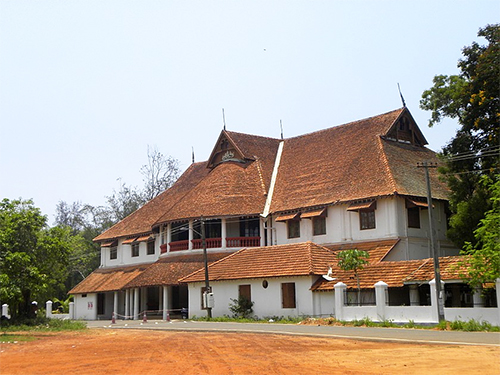
British Residency in Kollam city built by Col. John Munro
He influenced these rulers to introduce many progressive reforms.[11] During his tenure as Diwan, he reformed the judicial system, improved the revenue of the states, prevented corruption and mismanagement and started the process of abolishing slavery. Slavery was abolished in Munroe Island on 8 March 1835 and finally by Royal proclamation of the maharajah of Travancore in 1853 and 1855. Munro removed many taxes levied on the poorer sections of the community. With deep Christian convictions, he persuaded the Rani of Travancore to donate land in Kottayam as well as the money and timber, in-order to build the Orthodox Pazhaya Seminary and also petitioned the Church Missionary Society to send missionaries on a Help Mission, to educate and train the clergy of the Malankara Church.[12][13][14][15] In 1816, the Church Missionary Society sent Benjamin Bailey, Henry Baker senior, and Joseph Fenn, who established what became CMS College Kottayam. Bailey was the first principal. With Munro's support, Bailey had the bible translated into Malayalam.[16] About the same time, Thomas Norton established a CMS School at Alleppy. The network of schools established by missionaries, and also their wives, meant Travancore led the world in primary education for girls as well as boys, and laid the foundations for the high levels of literacy in Kerala.[17]
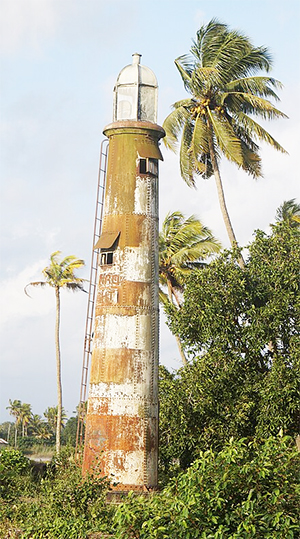
Munro Light at Pullam, Kottayam
Later life
John Munro came home on leave in 1819, when he bought Teaninich Castle from his brother Hugh.[18] He returned briefly to India in 1823–4, before ill-health compelled his retirement. As an evangelical Christian, he supported the Great Disruption of 1843. His calotype portrait by David Octavius Hill was the model for his inclusion in the Hill's famous painting of the signing of the Deed of Separation at the First Assembly of the Free Church of Scotland. He provided land for the Free Church in Alness, of which he became an elder. On Hugh's death in 1846, he inherited the Teaninich distillery which the latter had founded in 1817.
Major-General John Munro, 9th of Teaninich, died on 25 January 1858, and was buried in the Teaninich family vault in Alness Old Parish Church.
Legacy
Munro is remembered as one of the most brilliant and popular administrators of the kingdoms of Cochin and Travancore.[8] The Travancore State Manual of 1906 said of him, "He has left an imperishable name in the hearts of the Travancore population for justice and probity. The most ignorant peasant or cooly in Travancore knows the name of Munrole Sahib... He worked with a single-handed devotion to the interests of the state."[10] Canon Horace Monroe claimed "He lived to see Muslims and high caste Hindus appreciate the integrity and fairness of Christian judges, and he paved the way for those who since his day have tried to interpret Western Christianity to the Eastern people."[4]
An archipelago of eight islands located in the Ashtamudi Lake of Kollam (Quilon), called Munroe Island,[19] was named in his honour. On his death, a series of lights to guide travellers in the lakes and backwaters of the State were called ‘Munro Lights’ in his honor by the Travancore Government.[10]
Family
John Munro had four children while serving in Madras, probably by native mother(s).[2]
1. Urban Vigors Munro (baptised 1801 Madras d. Travancore 1844) was in 1827 appointed first Conservator of Forests of Travancore, to manage the state monopoly of teak, and later also cardamom, ebony and sandalwood. His son John Daniel Munro was first a coffee planter, but headed the newly separate Cardamom Department from 1869. He built paths to open up the area round Peermade and Munnar, enabling the founding of tea industry in the Kan(n)an Devan Hills.[20] His short book The High Ranges of Travancore describes these hills.[21]
2. James Munro (baptised 1805 died 1805).
3. Margaret Munro (died 1807).
4. Theodosia (born 1805, baptised 1807, probably also died young). Her mother's name is given as Chauby.
John Munro was married in Madras in 1808 to Charlotte, sister of Valentine Blacker. Their children were:[4][22]
1. Charlotte Munro (1810 - 1875, who married George Augustus Spencer)
2. James St. John Munro (baptised December 1811 in Padanilam, Travancore). He disposed of his succession to Teaninich to his brother Stuart Caradoc Munro, and became British Consul in Montevideo, Uruguay, where he died in 1878.
3. John Munro (1820 - 1845, served as captain in the 10th Light Cavalry of the Bengal army and as Aide de Camp to Lord Hardinge. After being promoted to major, he was wounded at the Battle of Moodkee in Dec 1845 and died two days later)
4. Stuart Caradoc Munro (1826 - 1911), a tea-planter in Ceylon, who left no issue.
5. Maxwell William Munro (1827 - 1854, died at sea).
See also
• Vyavahāramālā
***********************
John Munro and the History of Munroe Island, Kollam Kerala
by Manish Jaishree
Accessed: 8/28/24
https://manishjaishree.com/john-daniel- ... oe-island/
NOTICE: THIS WORK MAY BE PROTECTED BY COPYRIGHT
YOU ARE REQUIRED TO READ THE COPYRIGHT NOTICE AT THIS LINK BEFORE YOU READ THE FOLLOWING WORK, THAT IS AVAILABLE SOLELY FOR PRIVATE STUDY, SCHOLARSHIP OR RESEARCH PURSUANT TO 17 U.S.C. SECTION 107 AND 108. IN THE EVENT THAT THE LIBRARY DETERMINES THAT UNLAWFUL COPYING OF THIS WORK HAS OCCURRED, THE LIBRARY HAS THE RIGHT TO BLOCK THE I.P. ADDRESS AT WHICH THE UNLAWFUL COPYING APPEARED TO HAVE OCCURRED. THANK YOU FOR RESPECTING THE RIGHTS OF COPYRIGHT OWNERS.
A visit to the Munroe Island and a desire to know more about the history of the Munroe island takes me to John Munro, a famous Scot, who left his indelible marks on the affairs of Travancore.
The History Of Munroe Island And Its Association With John Munro
Munroe Island is 13.54 square kilometre strip of land surrounded by the backwaters of Ashtamudi Lake and the Kallada River. It is named after John Munro, the British Resident and the Deewan of Travancore. I dig into the history to know more about John Munro and it takes me to the Travancore at the end of the eighteenth century.
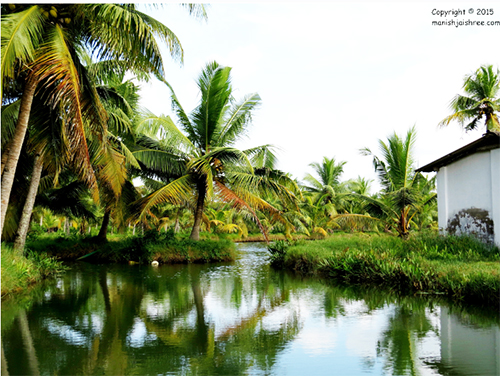
Munroe Island
The History Of Munroe Island, Kollam
The Rule Of Raja Balaram Varma And The Diverse Population Of Travancore
It is 1798. At a tender age of sixteen Raja Balaram Varma is ruling over Travancore. He is reigning over a diverse population of extremely old sects of Muslims and the Syrian Christians inhabiting the region since first millennium; low-caste fishermen, who got converted to Roman Catholicism; and a highly stratified Hindu Society.
Among Hindus the Brahmins are at the elitist position having major land holdings; at the middle strata of the society are the Nairs, the military caste, some of its members own land and some work as managers to the land owning Brahmins; at the lowest level are the enslaved agriculture workers, the Pariah, the Pulaya, the Ezhara and the Nadars.
Increasing British Influence
Around the same period of time, the British are also increasing their influence in South India. They are sensing an opportunity to establish their own rule by making local kings dependent on them.
They are coercing local kings into treaties with a promise to protect them from foreign invaders. Most feared among them is Tipu Sultan. The British cajole the kings into a treaty with a promise that after signing it they no longer need to maintain big armies, a huge financial burden for the cash-strapped states.
The Kingdom Of Travancore Entering Into An Alliance With British
The kingdom of Travancore is suffering an acute mismanagement in revenue collection; corruption is rampant and the royal coffers are empty. So the kingdom of Travancore along with Cochin decides to enter into a treaty with British. The treaty demands a fixed pay-out in return for the protection.
The Corrupt But Influential-Jayanthan Sankaran Nampoothiri
Maharaja is under great influence of a corrupt nobleman, Jayanthan Sankaran Nampoothiri.
Nampoothiri has murdered Raja Kesavadas, the previous Deewan, and has nominated himself as new Deewan. Maharaja is not happy with him, but he is not able to assert, himself and his kingdom is characterized by intrigue and corruption. Ruthless and arrogant Deewan has even started to behave as the virtual ruler.
Deewan Nampoothiri is not bothered about the bad financial condition of the state and instead of bringing expenditure under control he is busy enjoying the luxuries with increased tax on the subjects.
Velu Thampi - A Great Warrior And A Freedom Fighter
Velu Thampi, a Jagirdar, revolts against Nampoothiri and after a bloody civil war manages to get him exiled.
Velu is now the new Deewan.
However, he is also not able to improve the state of revenue collections and to meet the demand of money in lieu of British support. He realizes that as the kingdom is completely dependent on British army, the pay-out has been increased manifolds.
Maharaja is now a mere puppets with no sovereign control over his own kingdom. Velu is a fighter and decides to fight against the British and to get rid of them. The bad luck looms over the kingdom. Velu Thampi's revolution is curtailed and in 1809 he kills himself, dying as a martyr.
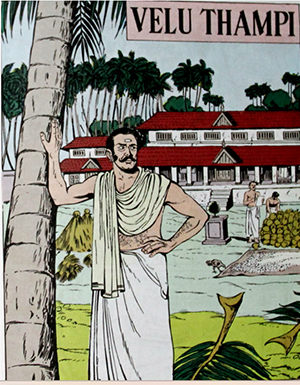
Velu Thampi (courtesy Amar Chitra Katha)
King Balaram Varma Convinces British About His Innocence In Velu Thampi's Revolt
The king Balaram Varma convinces the British that he had no role in the revolt and Velu acted on his own. The British allows him to continue, though now with much lesser army under his direct command, and further increase in the pay-outs to them.
Gowri Lakshmi Bai And Her Deewan Ummini Thampi
Maharaja Balaram Varma dies in 1810 and is succeeded by Gowri Lakshmi Bai, daughter of his adopted sister.
She is facing several conspirators, most notable among them is Kerala Varma, a distant cousin of Maharaja Balaram Varma. She also realizes that her Deewan Ummini Thampi is acting independent, and is unanswerable to her.
Appointment Of John Munro As Deewan. The royal treasure is reducing at an alarming rate. All this alerted Rani, and one day, within one year of her occupying the throne, she sacks U.Thampi and appoints the British Resident Col John Munro, her new Deewan. A master-stroke from a political novice.
His goal is to balance the Government’s books and ensure the company receives regular tribute.
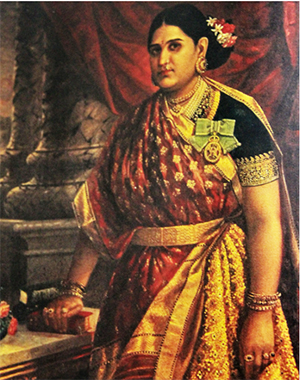
Maharani Lakshmi Bayi, as painted by Raja Ravi Varma, she was the elder sister of Raja Ravi Varma's wife.
Personality Of John Munro
John Munro has a forceful and shrewd personality. He is also an accomplished linguist, being able to speak and write fluently in French, German, Italian, Arabic, Persian and several of the Indian dialects.
The twin appointments make him the most powerful person in Travancore. However, instead of indulging in royal luxuries, he carries a number of reforms that change the history of Travancore.
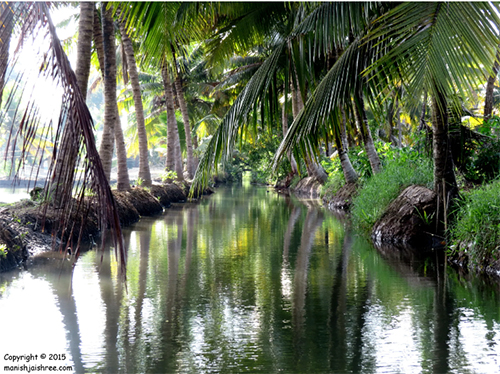
Quaint water-alleys of Munroe Island
John Munro - The Reformist
Munro realizes soon that many of the district and village officials responsible for collecting tax revenues are corrupt. So to rein them in and to bring the much-needed administrative reforms, he limits their power only to the tax collection.
In case of misconduct or corruption these officials can now be subjected to judicial trials. For judicial system he selects officers among the natives, the most respectable Brahmins, the Nairs and the Syrian Christians, maintaining a balance among these powerful sects of the society. Travancore thus becomes the first kingdom where the judicial system of 20th century is introduced.
He re-organizes and re-energizes the police department. He is also taking initiative to fight the deadly smallpox disease and in order to eradicate it from Travancore he starts India's first vaccination department.
However, he realizes soon that the vaccination department and the team supporting the program has aroused suspicion among locals.
He requests Maharani Gowri Laxmi Bai to get vaccinated. Maharani whole-heartedly agrees to the cause. She is so convinced that she gets all her family members vaccinated as well. This complete faith in vaccination alleviates fear and misconceptions of many.
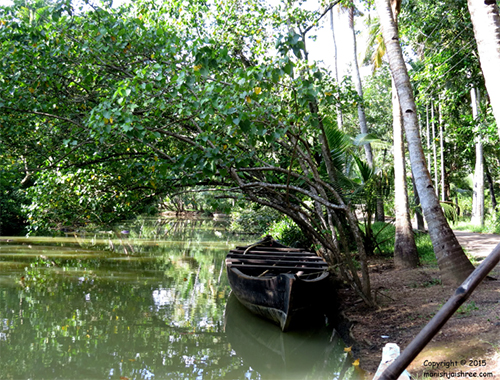
A solitary boat@Munroe Island
John Munro And Gowri Lakshmi Bai - Relationship Of Mutual Respect
John Munro respects the queen and has a soft corner for her. It is a common belief that he is discharging his duties with honesty. Time and again he also argues against the British on behalf of the Travancore state he represents.
The Oppressive Tax Regiment Of Travancore
Travancore has an oppressive caste system and an equally oppressive tax regiments for the downtrodden. Each strata in the society is oppressed by its upper strata and in turn oppresses its lower strata with equal vehemence. The social rule and the tax levied on lower castes are weird. Here is a list of a few of them.
The women of lower caste are required to pay "Mulakkaram - The breast tax" to cover their bosoms in public and the tax amount is calculated according to the size of the breast.
The lower castes people are also subject to Oozhiyam where they can be involved in any business that involves strenuous work without paying any wage for the same. The people of lower castes are taxed for marriages, childbirth, and even for any death occurring in their family.
The country boats, ploughs, carts, umbrellas, head-scarves, palm leaf, jaggery, the dry leaves used as fuel, huts the lower caste people live in, and even their moustaches are taxed.
There are taxes on oil mills, bows, iron and forges, exchanges, palanquins, hunting and on even on keeping a civet cat. There is also an important tax called 'purushantaram', a tax of twenty-five percent normally levied on all hereditary property.
Munro convinces Maharani and she forbade slavery except in agriculture that is completely dependent on it.
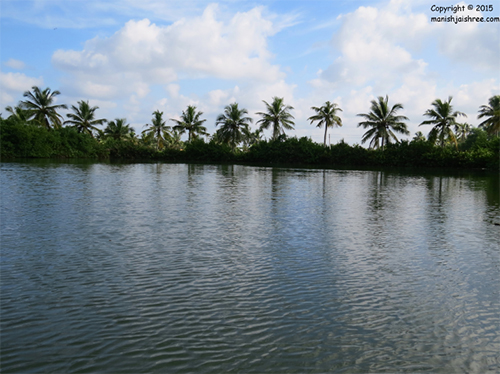
Munroe Island
John Munroe, The Shrewd Scotsman
Munro is also a shrewd Scot, well aware of the English interests. He believes that engaging local Christian population in state jobs will help him in garnering their support for the British interests in the region.
Till this time, the foreign Christian invaders, be it the Portuguese, or the Dutch, treated the Syrian Christians with suspicion and persecuted them similar to the other natives. Munro supports Syrian Christians. As a Christian Philanthropist, he also wishes to revive the Syrian Church.
He rescues Christians from compulsory services on Sunday and also from the temple taxes. He shows special interest in getting the Syrian scriptures translated to Malayalam. And as soon as the translation is ready, he gets its copies printed and places them in all churches of the region.
Connection Of John Munro With The History Of The Munroe Island
During this time, a senior priest Pulikkottil Joseph Kathavar of the Malankara Church, expresses his desire to establish a seminary for training priests and a place to settle the newly converts. This piece of land provided by Col Munro is later named as Munro-Thuruth (Munro Island) in his remembrance.
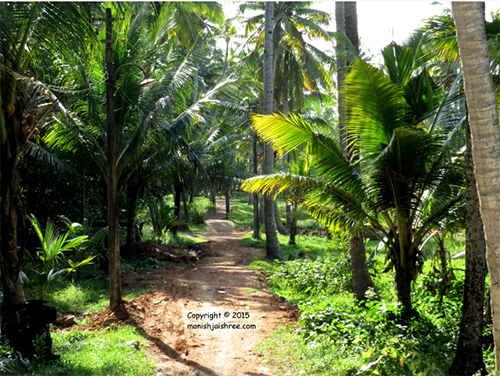
A path into Munroe Island
Grey Shades Of John Munro
Not everyone is happy with Munro though. In the name of revenue reforms he has seized sizable Hindu temple properties with no compensation and is blamed for jumbling and mixing of the land records in such a manner that even when he retires, it becomes impossible to catalog temple land from the Government land.
Some people believe that in this manner he single-handedly annihilated the temples of the region by reducing their revenues drastically.
In 1814, John Munro resigns from his Deewanship and returns to his birth place Teaninich Ross-Shire in Scotland. He lived there until his death in 1858. Today he is remembered as one of the Greatest British administrators of Travancore and Cochin, in one hundred fifty years of British domination.
For further reading on Travancore history, read the book "Ivory Throne: Chronicles of the house of Travancore” by Manu S. Pillai.

